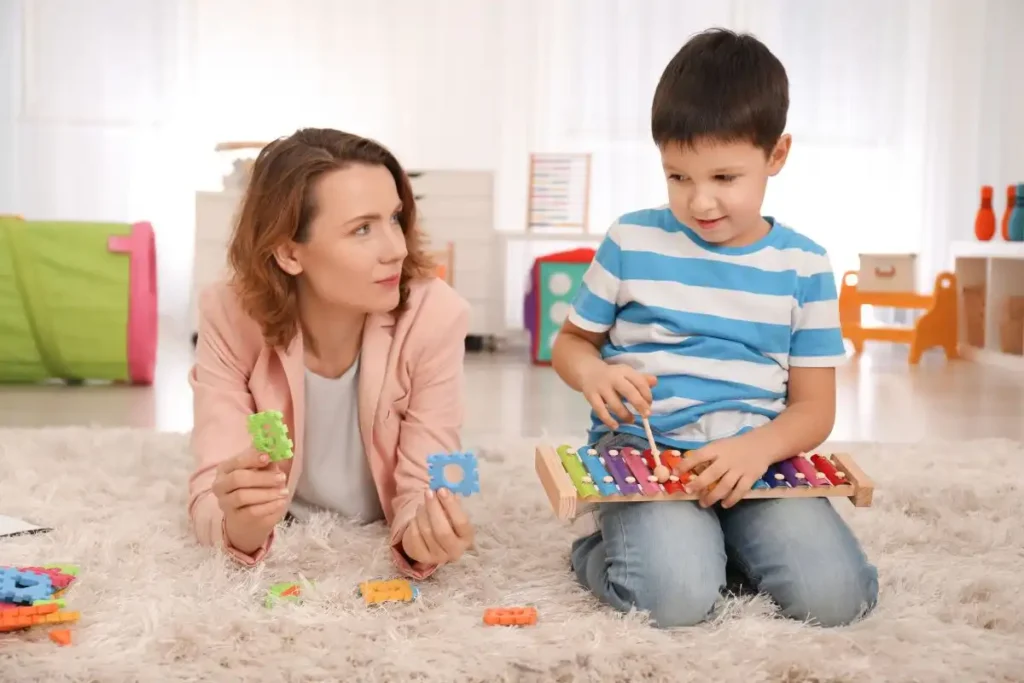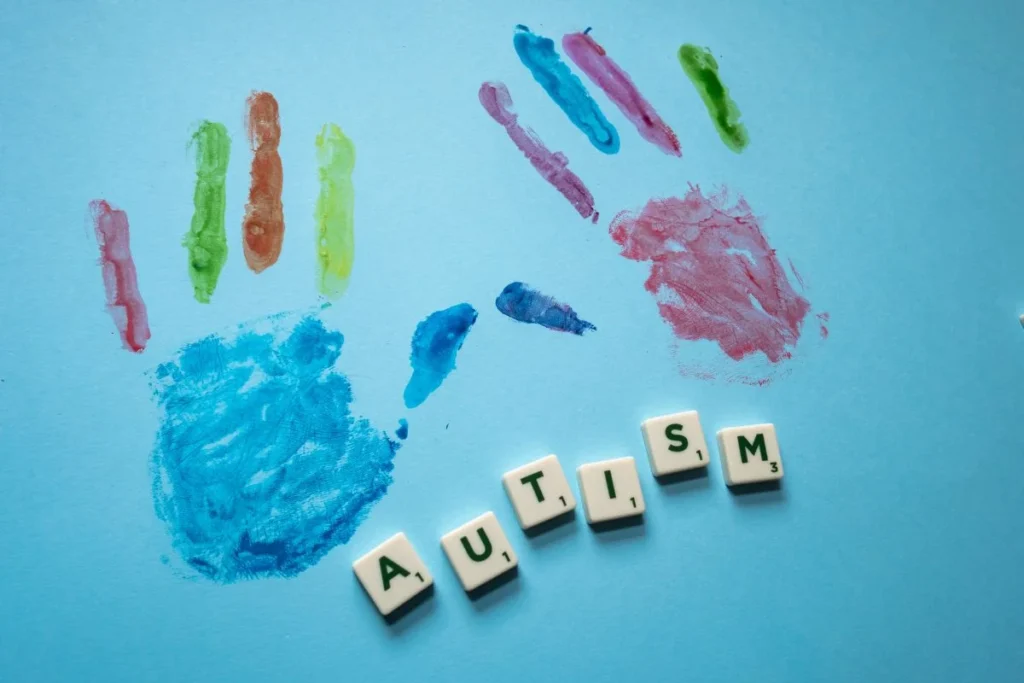Impulsivity is a common behavioral characteristic of many autistic individuals and can range from mild to severe. Impulsive behaviors are actions that are performed without forethought or regard for potential consequences. Autistic people may have difficulty controlling impulse behaviors for various reasons related to the way their brains process and regulate information.
Some of the most common impulsive behaviors seen in autism include:
- Interrupting or shouting out
- Difficulty waiting or taking turns
- Acting without thinking
- Running off or bolting
- Making careless mistakes
- Aggression or outbursts
- Difficulty transitioning between activities
- Socially inappropriate actions
Research indicates that multiple factors connect autism and impulsivity. Many autistic individuals have executive functioning challenges that make it harder to control impulses, plan, shift attention, and regulate emotions. There may also be sensory processing differences that lead to impulsive reactions. Additionally, difficulty communicating wants and needs may result in impulsive behaviors to gain access to desired stimuli. An overfocus or underfocus on details can also impact impulse control.
Causes of Impulsive Behavior
Impulsive behaviors in autism often stem from underlying challenges that make it difficult to control impulses. Some of the key causes include:
-
Executive functioning challenges – Many autistic individuals struggle with executive functions like planning, organization, working memory, and inhibition. These skills allow us to control impulses and think through consequences before acting. Weak executive functioning makes it much harder to resist impulsive urges.
-
Difficulty with impulse control – Some research suggests autistic people have direct biological differences in parts of the brain tied to impulse control. This can make it intrinsically harder for them to override impulses in the moment.
-
Sensory sensitivity – Sensory overload is common in autism. When overstimulated, autistic people may act out impulsively as a way to relieve stress and discomfort. Certain impulses like rocking or flapping may provide soothing sensory input.
-
Rigid thinking – Autistic individuals often prefer consistency and routine. When something disrupts their routine or expectations, the urge to impulsively react can override better judgment. Difficulty coping with change can fuel impulsive behaviors.
Environmental Strategies
One of the most effective ways to reduce impulsive behavior is to make changes to the environment. This removes temptations and limits distractions that can trigger impulsivity. Some strategies include:
-
Remove temptations and distractions: Clear away any objects or stimuli that may encourage impulsive behavior. Keep items that could lead to impulsiveness out of sight and reach. Reduce clutter and overstimulating decor.
-
Create structured routines: Establish regular schedules and transition warnings. Post visual routines to provide expectations and predictability. Consistent routines help limit uncertainty that can increase impulsivity.
-
Use visual schedules and timers: Visual supports like schedules, calendars, and timers allow individuals to see the passage of time and know what to expect next. Visuals provide clarity and a sense of control, reducing anxiety that can prompt impulsive actions.
By modifying the surroundings to limit triggers and distractions, individuals with autism can focus better and exhibit fewer impulsive behaviors. Environmental strategies remove the opportunity and temptation to act rashly, creating a setting more conducive to thoughtful actions.
Cognitive Strategies
Teaching self-monitoring skills and impulse control can help reduce impulsive behaviors in children with autism. This involves directly teaching children strategies to stop and think before acting.
Some cognitive strategies include:
-
Teach self-monitoring – Help the child recognize when they are feeling impulsive. Teach them to stop, take a breath, and think before acting. Use visual cues like a stop sign or timer to remind them.
-
Practice waiting and turn-taking – Impulsivity often involves difficulty waiting and wanting immediate gratification. Practice having the child wait for gradually increasing amounts of time before getting something they want. Take turns in games and conversations.
-
Role-play situations – Set up practice scenarios where the child has to resist impulsive urges. Praise them for stopping and thinking before acting. Help them brainstorm appropriate responses.
Building cognitive skills takes time and practice. However, teaching children with autism strategies to manage their impulses can reduce disruptive behaviors and improve self-regulation over time.
Sensory Support Strategies
Individuals with autism often benefit from sensory support strategies to help reduce impulsive behaviors. These strategies aim to provide appropriate sensory input to help regulate emotions and impulses.
Sensory Diets
A sensory diet incorporates targeted sensory input throughout the day to help meet sensory needs. This may involve activities like jumping, swinging, deep-pressure hugs, fidget toys, and listening to music. A trained occupational therapist can help develop an appropriate sensory diet plan.
Fidget Toys
Fidget toys provide tactile, vestibular, and proprioceptive input through fidgeting, clicking, spinning, squeezing, and stretching. They can be used as part of a sensory diet to help redirect impulses and release tension or anxiety. Popular fidget toys include stress balls, fidget cubes, spinners, and tangle toys.
Weighted Blankets
Weighted blankets apply gentle, distributed pressure that can have a calming effect. The deep pressure input helps relax the nervous system and body. Individuals with autism often find weighted blankets help them feel centered, focused, and less impulsive. The blankets should weigh 10% of the user’s body weight.
Communication Strategies
Children with autism can sometimes communicate in impulsive or inappropriate ways when they are feeling overwhelmed or want something. One strategy to reduce impulsive behavior is to teach more appropriate communication skills.
-
Help the child learn to appropriately communicate their wants and needs. For example, teach them to say “I need a break” instead of having a tantrum. Practice using these appropriate phrases during calm times, not just in the heat of the moment.
-
Provide visual aids, social stories, or role-playing scenarios to demonstrate polite and respectful ways to make requests. Model saying “please” and “thank you” yourself.
-
Praise the child and provide positive reinforcement like rewards when they communicate politely. This helps motivate them to maintain those skills.
-
Prompt the child to use the appropriate phrases before reacting impulsively. Over time and with practice, it can become a habit.
-
Remain calm and patient when responding to impolite requests. Model the tone and language you want the child to learn.
Teaching a child with autism more socially appropriate communication skills provides them with tools to express their needs calmly and reduces the urge to act out impulsively. Reinforcing these proper communication techniques consistently over time can help minimize inappropriate behaviors.
Reinforcement Strategies
Reinforcement strategies involve rewarding positive behaviors to encourage their continuation. This is an effective way to promote good behavior and discourage problematic impulsive actions.
Praise Appropriate Behavior
-
Provide frequent verbal praise when the individual demonstrates good impulse control. Be specific about what behaviors you are praising.
-
Celebrate small wins and milestones to positively reinforce progress.
-
Show approval through high-fives, thumbs up, or other forms of positive feedback.
Use Token Reward Systems
-
Create a token economy system where tokens or points are earned for desired actions. These can later be exchanged for rewards.
-
Tokens should be awarded immediately after the positive behavior occurs.
-
Ensure the rewards are motivating and meaningful for the individual.
Provide Frequent Reinforcement
-
Reinforcement needs to happen consistently in the initial stages of learning to establish the connection between action and reward.
-
Slowly thin out the schedule of reinforcement as the preferred behaviors become habits.
-
Unexpected rewards or surprise bonuses keep motivation high even with less frequent reinforcement.
-
Consider using reinforcement schedules that reinforce a variable number of times the behavior occurs.
Physical Activity Strategies
Physical activity is an effective way to channel impulsive behaviors and reduce restlessness in children with autism. Providing regular outlets for exercise and movement can make a big difference. Some ideas include:
-
Regular exercise outlets – Make time for physical activity every day. Play sports, go to the park, ride bikes, swim, or enroll your child in an adaptive physical education class. Staying active helps healthily release pent-up energy.
-
Movement breaks – Incorporate short physical activity breaks into your child’s day. Have them do jumping jacks, run in place, dance, stretch, or do yoga during natural transition times. Moving their bodies helps refocus attention.
-
Occupational therapy – Occupational therapists can recommend therapeutic exercises tailored to your child’s needs. Programs often include sensory integration activities that provide calming input. Heavy work like pushing, pulling, and climbing helps organize the sensory system.
Building physical activity into your child’s routine provides positive outlets for impulse control struggles. Consult their treatment team to develop safe, engaging movement strategies. With regular exercise, children with autism can channel energy in a focused, productive way.
Medication Interventions
Medication can sometimes help reduce impulsive behaviors in autism. Some of the medications that have shown promise include:
Selective Serotonin Reuptake Inhibitors (SSRIs)
SSRIs like fluoxetine (Prozac) and sertraline (Zoloft) increase levels of serotonin in the brain, which can help improve impulsivity and aggression. Studies have found SSRIs to be effective in reducing irritability, stereotypy, inappropriate speech, and maladaptive behaviors in autistic individuals. They should be used cautiously and with close monitoring for side effects.
Stimulant Medications
Stimulants like methylphenidate (Ritalin) and amphetamines (Adderall) are sometimes prescribed to help with attention and hyperactivity issues in autism. By increasing dopamine signaling, they can reduce impulsive behaviors and restlessness. However, stimulants should be used with care as they may exacerbate repetitive behaviors in some cases.
Alpha-Adrenergic Agents
Alpha-2 agonists like guanfacine (Intuniv) and clonidine (Kapvay) have shown effectiveness for ADHD symptoms in autism by reducing norepinephrine activity. They can help improve self-control and reduce hyperactive and impulsive behaviors. Side effects like sedation and low blood pressure need to be monitored.
Overall, medication can be a helpful tool alongside other interventions when treating impulsivity in autism. A doctor should closely oversee usage to ensure benefits outweigh potential risks. Multimodal strategies combining medication and therapeutic approaches tend to be the most effective.
Seeking Professional Help
Impulsive behaviors in autism often require professional support and guidance. Consulting with experts can help provide needed assistance and long-term management strategies. Some professionals that may help include:
Behavioral Therapists
- Work directly with the individual to shape behaviors using reinforcement, prompting, modeling, etc. Can conduct a functional behavior assessment to understand the causes of impulsivity. Help implement replacement behaviors and skills. Provide parent training.
Psychologists
- Assess cognitive, emotional, and behavioral factors influencing impulsivity. Can diagnose conditions like ADHD that exacerbate impulsivity. Provide therapy and recommend medications if needed. Help with emotional regulation, social skills, etc.
Pediatricians
- Assess any medical factors that contribute to impulsivity like sleep disorders, GI issues, seizures, etc. Can prescribe medications to help curb impulsive urges if needed. Provide referrals to therapists and other specialists.
School Counselors
- Work with teachers to adapt the learning environment to minimize impulsive behaviors. Develop accommodations and modifications to support student success. Teach coping strategies for impulse control. Provide counseling and check-ins. Facilitate social connections.
Seeking input from these experienced professionals can provide needed support when addressing impulsive behaviors in autism. Their specialized expertise helps ensure comprehensive, evidence-based care.
Thanks to our partners, find replica Rolex watches online catering to various preferences and budgets, from economical to top-tier Super Clone models.







